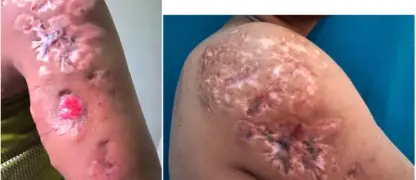That fiery, raised skin rash could be more than just irritation. Erysipelas, also known as "St. Anthony's Fire," is a bacterial infection requiring swift medical attention. Ignoring the signs can lead to serious complications, so understanding them is crucial for your health.
What are the main causes of Erysipelas?
- What causes erysipelas is primarily an infection by Group A Streptococcus bacteria, which enter the body through a break in the skin.
- Conditions that create skin breaks, such as ulcers, fungal infections like athlete's foot, or surgical incisions, significantly increase your risk of developing it.
- A compromised lymphatic system from lymphedema or past surgery can also make it easier for the bacterial infection to take hold and spread rapidly.

Key symptoms of Erysipelas to watch for
- One of the main erysipelas skin infection symptoms is a fiery red, swollen rash with a distinct, raised border that feels hot and tender.
- This infection, often called a St. Anthony's fire rash, may be preceded by systemic symptoms like a high fever, chills, fatigue, and general malaise.
- While it can appear anywhere, erysipelas on the face and legs are the most common locations, sometimes developing blisters on the affected area.
How can you prevent Erysipelas effectively?
- Effective erysipelas prevention begins with practicing good hygiene and wound care; always keep cuts, scrapes, and insect bites clean and covered.
- Properly manage underlying skin conditions like eczema or athlete's foot to maintain a strong, unbroken skin barrier that protects against bacterial entry.
- For those with chronic swelling (lymphedema), wearing compression garments and keeping skin well-moisturized can help prevent cracks where bacteria might enter.
>>> Understand more about: Bejel - An endemic syphilis-like chronic skin disease
Image comparing erysipelas vs cellulitis pictures on a leg







>>> Don't miss: Actinomycosis - A rare, slow-growing bacterial infection
Erysipelas is typically not considered contagious from person to person, but it requires prompt treatment for erysipelas, usually with antibiotics for erysipelas. If you notice these symptoms, see a doctor immediately to avoid long term effects of erysipelas.
>>> Learn now: C. difficile infection - A guide to causes and treatment






